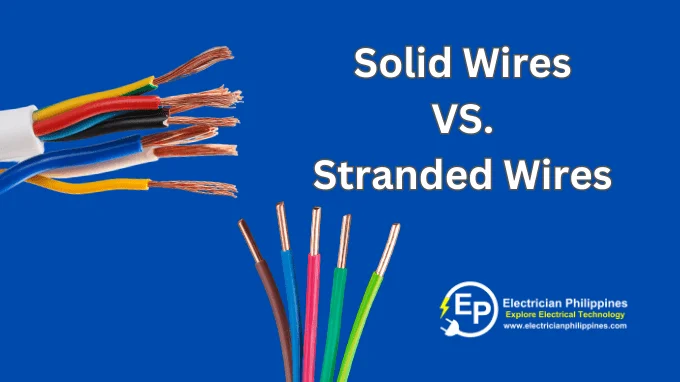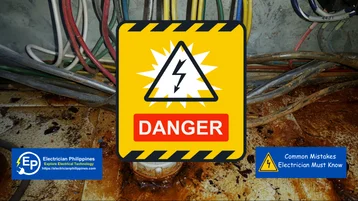In the world of electrical wiring, both solid and stranded wires play crucial roles in connecting devices and transmitting power. Each type of wire has its own set of characteristics that make it suitable for specific applications. In this article, we’ll delve into the differences between solid and stranded wires, highlighting their unique attributes and use cases.

Table of Contents
Solid Wires
Solid wires are composed of a single, continuous conductor made of a single piece of metal, typically copper or aluminum. These wires are commonly used in applications where minimal flexibility is required.
Advantages of Solid Wires
- Conductivity: Solid wires offer excellent electrical conductivity due to their continuous conductor structure.
- Less Resistance: The absence of gaps or junctions in the conductor reduces resistance, making solid wires efficient for transmitting electricity over short distances.
- Simple Termination: Solid wires are easy to terminate, making them suitable for applications where a secure connection is essential.
Disadvantages of Solid Wires
- Lack of Flexibility: Solid wires are rigid and less flexible compared to stranded wires, which can limit their use in situations where frequent bending or movement is required.
- Susceptible to Breaking: The rigid nature of solid wires makes them more susceptible to breaking when subjected to mechanical stress or vibration.
Stranded Wires
Stranded wires consist of multiple smaller wire strands twisted or braided together to form a larger conductor. These wires are known for their flexibility and are commonly used in applications that involve movement or vibration.
Advantages of Stranded Wires
- Flexibility: The twisted or braided strands in stranded wires allow for greater flexibility, making them ideal for applications that involve bending or movement.
- Resistance to Vibration: The design of stranded wires enhances their ability to withstand vibration and mechanical stress, making them suitable for applications in environments with movement.
- Durability: The multiple strands in stranded wires distribute stress more evenly, reducing the risk of breakage.
Disadvantages of Stranded Wires
- Higher Resistance: The presence of junctions between strands can lead to slightly higher electrical resistance compared to solid wires, particularly over longer distances.
- Complex Termination: Terminating stranded wires can be more complex than solid wires, requiring proper techniques to ensure secure connections.
Comparison between Solid and Stranded Wires
When deciding between solid and stranded wires, several factors come into play:
- Flexibility: Stranded wires excel in flexibility due to their multiple strands, whereas solid wires lack this characteristic.
- Resistance to Vibration: Stranded wires are more resilient against vibration, making them suitable for applications involving movement.
- Applications: Solid wires are often used in fixed installations, while stranded wires are preferred in situations where flexibility and movement are essential.
- Ease of Termination: Solid wires are simpler to terminate, while stranded wires require more care during termination.
Factors Influencing Choice
The choice between solid and stranded wires depends on various factors:
- Use Case and Environment: Consider whether the wiring will be subjected to movement, vibration, or fixed installations.
- Electrical Properties: Evaluate the electrical resistance and conductivity required for the specific application.
- Cost Considerations: Stranded wires tend to be more expensive due to their manufacturing process, so budget constraints may influence the decision.
Conclusion
In the world of electrical wiring, both solid and stranded wires have their own unique advantages and disadvantages. Solid wires excel in applications where rigidity and simplicity of termination are essential. On the other hand, stranded wires shine in scenarios demanding flexibility, resistance to vibration, and durability. When selecting between these two options, carefully analyze the requirements of the specific application to ensure an optimal and reliable wiring solution.
Frequently Asked Questions (FAQs)
- Can stranded wires replace solid wires in all applications?
- While stranded wires offer flexibility, they might not be suitable for all applications, especially those that require minimal movement or vibration.
- Are stranded wires more prone to electrical resistance?
- Stranded wires might have slightly higher resistance due to junctions between strands, but this difference is usually negligible in most applications.
- Are solid wires always easier to terminate than stranded wires?
- Yes, solid wires are generally simpler to terminate, but proper techniques and tools can ensure successful termination of stranded wires as well.
- What factors should I consider when choosing between solid and stranded wires?
- Consider the specific use case, the environment in which the wiring will be deployed, the required electrical properties, and the budget constraints.
- Can I use a combination of solid and stranded wires in the same installation?
- Yes, it’s possible to use a combination of both types of wires in an installation, depending on the specific requirements of different sections of the wiring.










